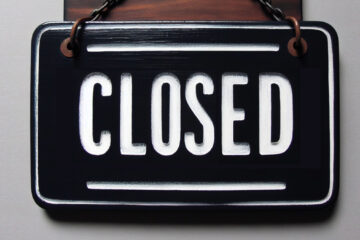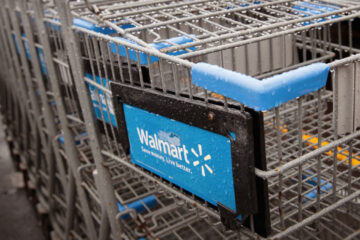It’s been a rough go for retailers. The rise of e-commerce has forced thousands of stores to close over the past 20 years, and it hasn’t gotten any easier since Covid forced more people inside and online.
Once-popular national retailers like Sears and Bed Bath & Beyond have shuttered, and even essential retail store chains like pharmacies have been hit hard by shifting consumer trends and stiffer competition.
Moreover, retailers have struggled mightily in the wake of skyrocketing inflation, which continues to take a toll on consumer spending. Inflation has slowed since peaking in 2022, but high prices have largely caused cash-strapped consumers to rotate away from discretionary purchases.
The Consumer Price Index showed inflation was 2.4% in March. That’s above the Fed’s 2% target, and worry has increased that inflation may accelerate in the wake of President Trump’s newly instituted tariffs.
Related: Major healthcare company files for Chapter 11 bankruptcy
Making matters more challenging, slowing economic activity and a weakening jobs market have increased the risk of stagflation or recession.
This environment means the strongest retailers are struggling, while the weakest retailers are more at risk than ever.
Pharmacy retailers are losing market share to larger rivals and online pharmacies.
Image source: Frederic J. Brown/Getty Images
Retail apocalypse drives companies into bankruptcy
Retailers can use Chapter 11 bankruptcy to cut expenses and debt, providing the wiggle room necessary for survival. Nevertheless, bankruptcy is a last resort.
Declaring bankruptcy challenges relationships with suppliers, bankers, workers, and customers. Suppliers may cut off deliveries and credit terms for retailers, banks may close lines of credit necessary for operations, and workers and customers may move elsewhere.
Related: Bankrupt essential retailer closing more stores across nation
Regardless, bankruptcy is sometimes the only choice, even for major retail chains.
Sears operated 700 stores when it filed for bankruptcy in 2018. Bed Bath & Beyond ran 1,500 stores in 2018, but that number had dropped to fewer than 300 in 2023 when it went bankrupt, and none remain open now. Christmas Tree Shops had over 80 stores before it closed all of them when it went bankrupt.
Economic challenges have been one big reason retailers have gone under, but they have also been forced to fight tooth and nail amid stiffening competition.
Walmart, Costco Wholesale, and Target have witnessed significant revenue growth thanks to expanding into new markets, often at the expense of smaller rivals. For example, Walmart’s sales increased to $681 billion in 2024 from $408 billion in 2010.
Among retailers hard hit by these large players are retail pharmacies, particularly Rite Aid.
Rite Aid has lost market share as Walmart and Costco have moved into the business of filling prescriptions. But it’s also getting squeezed by online pharmacy players, including Mark Cuban’s CostPlus Drug Company and Hims, a direct-to-consumer, subscription-based telehealth platform.
Rite Aid could file for bankruptcy yet again
Rite Aid’s lost market share made it more difficult to pay a mountain of debt accumulated over the years from acquiring rivals to compete against Walgreens and CVS Health.
The deals significantly expanded Rite Aid across more states, but interest on its debt was so burdensome that it attempted to sell itself to Walgreens in 2015, only to have the government scuttle the deal over antitrust concerns. A similar deal with Albertson’s also fell through.
More closings:
Iconic ice cream chain unexpectedly closing locationsStruggling auto parts chain closing down all stores but oneAnother discount retailer closing over 1,000 storesIconic retail chain closing nearly 500 stores
Unable to find a buyer, the company came under intense pressure when the Fed increased interest rates in 2022, causing its interest expense to surge. Already struggling, the retailer was dealt yet another blow when the Department of Justice filed a civil suit against it in 2023, alleging that pharmacists “repeatedly filled prescriptions for controlled substances with obvious red flags” and that Rite Aid “intentionally deleted internal notes about suspicious prescribers.”
Walgreens and CVS Health settled similar opioid suits for $5.7 billion and $4.9 billion, respectively.
The combination of slowing sales, rising interest payments, and the prospect of settling a multibillion-dollar lawsuit finally caused Rite Aid to file for Chapter 11 restructuring on October 15, 2023.
The bankruptcy filing allowed it to negotiate better terms with lenders. It also closed about a quarter of its locations to reduce costs, and it settled the Justice Department’s lawsuit for $7.5 million and an unsubordinated, general unsecured claim of $401.8 million.
Management hoped those moves would allow the company to emerge from bankruptcy and get back into the black. However, it apparently isn’t panning out as planned.
In early April, the Wall Street Journal reported that Rite Aid is trying to find a buyer again and is considering filing for bankruptcy for a second time.
Now, Bloomberg reports that Rite Aid is working with Guggenheim Securities to arrange debtor-in-possession financing. Companies secure this financing to pay operating expenses and debt during bankruptcy restructuring.
If Rite Aid can’t find a buyer and enters bankruptcy again, it may be forced to close more of its remaining 1,300 stores or sell itself piecemeal.
Related: Veteran fund manager unveils eye-popping S&P 500 forecast


